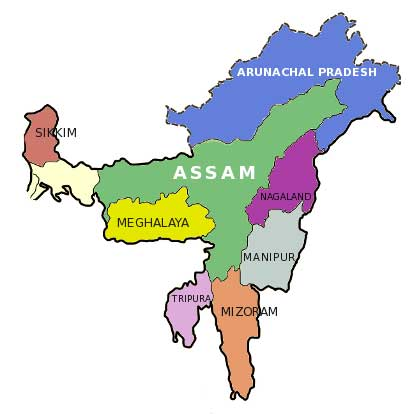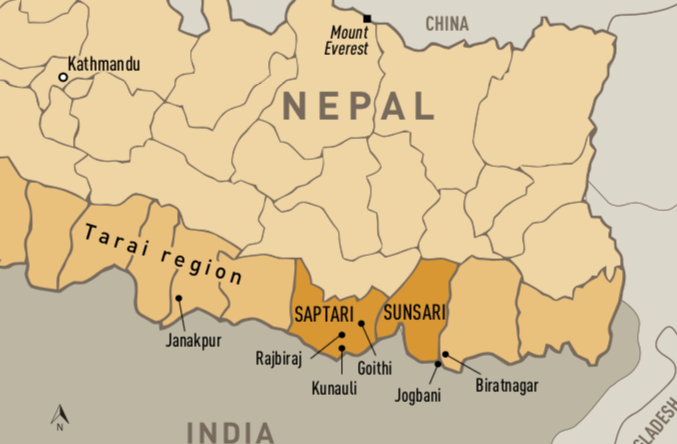Indian Polity
Disqualification Powers of Speakers
Why in News
The Supreme Court has recently held that disqualification petitions under the tenth schedule should be adjudicated by a mechanism outside Parliament or Legislative Assemblies.
- The Court has suggested a permanent tribunal headed by a retired Supreme Court judge or a former High Court Chief Justice as a new mechanism. This would require an amendment to the Constitution.
- Currently, disqualification of members of a House/Assembly is referred to the Speaker of the House/Assembly.
- However, for the present, the court said the Speakers should decide Tenth Schedule disqualifications within a “reasonable period”. What is ‘reasonable’ would depend on the facts of each case.
- The Court held that unless there are “exceptional circumstances”, disqualification petitions under the Tenth Schedule should be decided by Speakers within three months.
Logic Behind the Supreme Court’s Judgement
- The Supreme Court questioned why a Speaker, who is a member of a particular political party and an insider in the House, should be the “sole and final arbiter” in the disqualification of a political defector.
- For that matter, it asked why disqualification proceedings under the Tenth Schedule should be kept in-house and not be given to an “outside” authority. It reasoned that even the final authority for removal of a judge is outside the judiciary and in Parliament.
- The Court held that only swift and impartial disqualification of defectors would give “real teeth” to the Tenth Schedule.
Disqualification under the Tenth Schedule
- The Anti-Defection Law was passed in 1985 through the 52nd amendment to the Constitution. It added the Tenth Schedule to the Indian Constitution. The main intent of the law was to combat “the evil of political defections”.
- According to it, a member of a House belonging to any political party becomes disqualified for being a member of the House, if
- he voluntarily gives up his membership of such political party; or
- he votes or abstains from voting in such House contrary to any direction issued by his political party without obtaining prior permission of such party and such act has not been condoned by the party within 15 days.
Exceptions to the disqualification on the ground of defection (Two cases)
- If a member goes out of his party as a result of a merger of the party with another party. A merger takes place when two-thirds of the members of the party have agreed to such merger.
- If a member, after being elected as the presiding officer of the House, voluntarily gives up the membership of his party or rejoins it after he ceases to hold that office. This exemption has been provided in view of the dignity and impartiality of the office.
Powers of Speaker with regard to Anti-Defection Law
- Any question regarding disqualification arising out of defection is to be decided by the presiding officer of the House.
- After Kihoto Hollohan versus Zachilhu case (1993), the Supreme Court declared that the decision of the presiding officer is not final and can be questioned in any court. It is subject to judicial review on the grounds of malafide, perversity, etc.
Note
- This is the second time in recent months the court has highlighted the issue of taking away the disqualification power under the Tenth Schedule from Speakers.
- In the Karnataka MLAs’ disqualification case, the court had held that a Speaker who cannot stay away from the pressures and wishes of his political party does not deserve to occupy his chair.
Indian Economy
World Employment and Social Outlook -Trends 2020:ILO
Why in News
Recently, the International Labour Organisation (ILO) has released the World Employment and Social Outlook: Trends 2020 (WESO) report.
- The annual WESO Trends report analyses key labour market issues, including unemployment, labour underutilisation, working poverty, income inequality, labour income share and factors that exclude people from decent work.
Key Points
- Global Unemployment:
- The number of people unemployed around the world stands at some 188 million.
- Some 267 million young people aged 15-24 are not in employment, education or training, and many more endure substandard working condition.
- Working Poverty:
- Working poverty is defined as earning less than USD 3.20 per day in purchasing power parity terms.
- It affects more than 630 million workers or one in five of the global working population.
- Unpaid Work:
- 165 million people do not have enough paid work, and 120 million have either given up actively searching for work or otherwise lack access to the labour market.
- Almost half a billion people are working fewer paid hours than they would like or lack adequate access to paid work.
- Future Status of Global Unemployment:
- It is projected to increase by around 2.5 million in 2020. Though, global unemployment has been roughly stable for the last nine years.
- Moderate or extreme working poverty is expected to increase in 2020-21 in developing countries, increasing the obstacles to achieving Sustainable Development Goal 1 on eradicating poverty everywhere by 2030.
Reasons for Rising Unemployment
- Inequalities:
- Persisting and substantial work-related inequalities (Gender, age and geographical location) and exclusion are preventing from finding decent work and better futures.
- These inequalities also limit both individual opportunity and economic growth.
- Global Economic Slowdown:
- It is one of the major reason for not creating enough new jobs to absorb new entrants to the labour market.
- In addition, many African countries are experiencing a drop in real incomes and a rise in poverty.
- Rising Protectionism:
- A rise in trade restrictions and protectionism restricts national as well as global employment generation.
- Decreasing Value of Human Capital:
- Labour underutilisation and poor-quality jobs mean our economies and societies are missing out on the potential benefits of a huge pool of human talent.
Recommendations
- It suggests countries to ensure that economic growth and development occurs in a way that leads to the reduction of poverty and better working conditions.
- It also recommends for structural transformation, technological upgrading and diversification in global as well as national economies.
International Labour Organisation
- International Labour Organisation (ILO) was created in 1919, as part of the Treaty of Versailles that ended World War I, to reflect the belief that universal and lasting peace can be accomplished only if it is based on social justice.It became a specialized agency of the United Nations in 1946.
- It is a tripartite organization, the only one of its kind bringing together representatives of governments, employers and workers in its executive bodies.
- India is a founder member of the International Labour Organization.
- It is Headquartered at Geneva in Switzerland.
- In 1969, ILO received the Nobel Peace Prize for improving fraternity and peace among nations, pursuing decent work and justice for workers, and providing technical assistance to other developing nations.
Social Justice
Round-table of UNAIDS
Why in News
Recently, the high-level roundtable of the Joint United Nations Programme on HIV/AIDS (UNAIDS) was held at the World Economic Forum at Davos, Switzerland.
- Its theme was, “Access for all: Leveraging Innovations, Investments and Partnerships for Health”.
- It laid emphasis on accessibility of health to all with innovative technologies and solutions and also on bridging economic inequalities.
Joint United Nations Programme on HIV/AIDS
- It is leading the global effort to end Acquired Immune Deficiency Syndrome (AIDS) as a public health threat by 2030 as part of the Sustainable Development Goals. It was started in 1996.
- UNAIDS has a vision of zero new HIV infections, zero discrimination and zero AIDS-related deaths, and a principle of leaving no one behind.
- The UN Political declaration on ending AIDS was adopted in 2016 which seeks to end AIDS as a public health threat by 2030.
Acquired Immune Deficiency Syndrome
- It is a set of symptoms or syndrome caused by Human Immunodeficiency Virus (HIV) but it is not necessary that a person infected with HIV will definitely develop AIDS.
- A person infected with HIV is likely to develop symptoms of AIDS over a period of time when his/her immune system is too weak to fight HIV infection.
- This is the last stage of HIV when the infection is very advanced and if left untreated will lead to death.
- A person with HIV whose CD4 (a type of White Blood Cell called T cells) count falls below 200 per cubic millimetre is diagnosed with AIDS.
- The risk of HIV progressing to AIDS varies widely between individuals and depends on many factors including:
- The age of the individual
- The body’s ability to defend against HIV
- Access to high quality sanitary healthcare
- Presence of other infections
- Individual’s genetic resistance to certain strains of HIV
- Drug-Resistant strains of HIV
- Prevention includes safe sex, testing and counselling for HIV, voluntary medical male circumcision among other things.
Science & Technology
Proposal to Change Location of TMT
Why in News
India, a partner in the construction of Thirty Meter Telescope (TMT), has requested that the project be moved out of the proposed site at Mauna Kea, a dormant volcano in Hawaii, USA.
Key Points
- India’s Proposal for Changing the Location:
- The TMT has been a litigious site since 2014. The project has not made any progress because of regular obstructions.
- The proposed site is considered sacred to indigenous Hawaiians, and already has too many observatories in the region.
- Alternate Site:
- The proposed alternate site to locate the telescope is the Observatorio del Roque de los Muchachos (ORM) on La Palma in the Canary Islands, Spain.
- Reasons for Choosing Mauna Kea Initially:
- Mauna Kea in Hawaii is considered a superior site for telescope establishment because it offers best imaging possibilities, stable weather.
- Additionally, it also has the necessary infrastructure to manage telescopes as it already hosts several telescopes.
- India’s Role in TMT:
- India has committed $200 million, which is about a tenth of the proposed cost.
- The telescope needs 492 precisely polished mirrors and India is to contribute 83 of them.
- India, in 2020 stands to get 10% of the available slots. As the level of contribution determines the amount of viewing time, or slots, that the member-countries’ scientists get on the machine.
Thirty Metre Telescope
- The Thirty Metre Telescope (TMT) will enable scientists to study fainter objects in the universe, which gives information about early stages of evolution of the universe.
- It will also allow to see deeper into space and observe cosmic objects with unprecedented sensitivity.
- With its 30 m prime mirror diameter, TMT will be three times as wide, with nine times more area than the largest currently existing visible-light telescope in the world.
- The Thirty Metre Telescope is a joint venture (JV) involving following countries namely, USA, Japan, China, India and Canada.
Indian History
Statehood Day of Manipur, Meghalaya and Tripura
On the Statehood Day of Manipur, Meghalaya and Tripura (21st January), Prime Minister and other leaders praised the traditions and culture of the three northeast states.
- On 21st January, 1972, all the three states became full-fledged states under the North Eastern Region (Reorganisation) Act, 1971.
Merger of Manipur with India
- Before 15th August 1947, peaceful negotiations had brought almost all states whose territories were contiguous to the new boundaries of India, into the Indian Union.
- The rulers of most of the states signed a document called the ‘Instrument of Accession’ which meant that their state agreed to become a part of the Union of India.
- A few days before Independence, the Maharaja of Manipur, Bodhachandra Singh, signed the Instrument of Accession with the Indian government on the assurance that the internal autonomy of Manipur would be maintained.
- Under the pressure of public opinion, the Maharaja held elections in Manipur in June 1948 and the state became a constitutional monarchy. Thus Manipur was the first part of India to hold an election based on universal adult franchise.
- In the Legislative Assembly of Manipur there were sharp differences over the question of merger of Manipur with India. The Government of India succeeded in pressuring the Maharaja into signing a Merger Agreement in September 1949, without consulting the popularly elected Legislative Assembly of Manipur.
Merger of Tripura with India
- Tripura was princely state till the merger with Indian union on 15th November, 1949.
- The last king Bir Bikram who was on the throne, immediately before India's independence, died on 17th May, 1947.
- After his demise, his minor son Kirri Bikram Mannikya took the throne of Tripura kingdom, but he could not rule as he was minor.
- So his widow queen Kanchan Prabha took the charge of regency of Tripura and took over the administrative charges.
- She was instrumental for Merger of Tripura kingdom in Indian Union.
Merger of Meghalaya into India
- In 1947 the rulers of the Garo and Khasi region acceded to the newly independent country of India.
- Meghalaya, a small hilly state located in the North Eastern Region of India, came into existence as an autonomous state within the state of Assam on 2 April 1970 comprising the United Khasi and Jaintia Hills and the Garo Hills districts.
Changes Made in 1972
- In 1972, the political map of Northeast India underwent a major change.
- The two Union Territories of Manipur and Tripura and the Sub-State of Meghalaya got statehood.
Important Facts For Prelims
National Startup Advisory Council
Why in News
The Government has set up a National Startup Advisory Council to advise the Centre on measures needed to build a strong ecosystem for nurturing innovation and start-ups in the country.
- It needs to be noted that India ranks 136 on the parameter ‘starting a business’ in the World Bank’s Ease of Doing Business table against an overall rank of 63.
Composition of the Council
- Chairman: Minister for Commerce & Industry.
- Convener of the Council: Joint Secretary, Department for Promotion of Industry and Internal Trade.
- Ex-officio Members: Nominees of the concerned Ministries/Departments/Organisations not below the rank of Joint Secretary.
- Non-official members, to be nominated by the Central Government, from various categories like founders of successful startups, veterans who have grown and scaled companies in India, persons capable of representing the interests of investors into startups, etc. The term of the non-official members will be for a period of two years.
Functions
- The Council will suggest measures to foster a culture of innovation amongst citizens and students, in particular, promote innovation in all sectors of the economy across the country.
- It will also suggest measures to facilitate public organisations to assimilate innovation with a view to improving public service delivery, promote creation, protection and commercialization of intellectual property rights.
- Further, it will suggest measures to make it easier to start, operate, grow and exit businesses by reducing regulatory compliances and costs, promote ease of access to capital for startups.
Important Facts For Prelims
PM to Chair PRAGATI Meeting
Why in News
Prime Minister will chair the 32nd interaction through PRAGATI (Pro-Active Governance and Timely Implementation) on 22nd January 2020.
- It is held once every month on Fourth Wednesday at 3.30 PM and known as PRAGATI Day.
PRAGATI
- It is a platform which enables the Prime Minister to discuss the issues with the concerned Central and State officials with full information and latest visuals of the ground-level situation.
- It was launched in 2015 and has been designed by the Prime Minister’s Office (PMO) team with the help of National Informatics Center (NIC).
- It is a three-tier system (PMO, Union Government Secretaries, and Chief Secretaries of the States).
- The three objectives of PRAGATI are:
- Grievance Redressal
- Programme Implementation
- Project Monitoring
- The PRAGATI platform uniquely bundles three latest technologies: Digital data management, video-conferencing and geo-spatial technology.
- It promotes cooperative federalism as it brings on one platform the Secretaries of Government of India and the Chief Secretaries of the States.
- However, the direct interaction of the PM with the state secretaries without involving the political executives of the states is undermining the State political executive. It is also said that this is leading to a concentration of power in the extra-constitutional office of PMO.
- It is a robust system for bringing e-transparency and e-accountability with real-time presence and exchange among the key stakeholders.
- It is an innovative project in e-governance and good governance.
Important Facts For Prelims
Wollemi Pines
Why in News
The prehistoric Wollemi Pine grove, which exists in the Wollemi National Park northwest of Sydney, has been saved from bushfires in Australia.
Key Points
- Wollemi Pines are thought to have existed even during the Jurassic period. The oldest fossil of the rare pine species dates back 90 million years.
- Wollemi National Park is the only place in the world where these trees are found in the wild. Approximately, less than 200 trees are left.
- The pines, which prior to 1994 were thought to be extinct. Their location was kept secret to prevent contamination. They have benefited from an unprecedented environmental protection mission.
- Wollemi Pine (Wollemia Nobilis) is listed as critically endangered in the IUCN Red List.
- Wollemi National Park is a part of the Greater Blue Mountains Area which is a UNESCO World Heritage Site.
Important Facts For Prelims
Indian Navy Signs MoU with Geological Survey of India
Why in News
Recently, Indian Navy has signed a Memorandum of Understanding (MoU) with the Geological Survey of India (GSI) for ‘Sharing of seabed sediments data, products and expertise for Naval Application in Meteorology and Oceanography’.
Key Points
- GSI’s Marine and Coastal Survey Division has mapped most of India’s Exclusive Economic Zone and has a vast repository of offshore data.
- GSI collected this data using state-of-the-art oceanic research vessels Samudra Manthan, Samudra Kaustubh, Samudra Shaudhikama and Samudra Ratnakar.
- This data will be used by the Indian Navy’s rapidly growing blue water fleet for reliable and accurate oceanographic modelling to support maritime operations in the Indian Ocean region.
Geological Survey of India
- It was set up in 1851 primarily to find coal deposits for the Railways.
- Over the years, it has not only grown into a repository of geo-science information required in various fields in the country but has also attained the status of a geo-scientific organisation of international repute.
- The main functions of the GSI relate to creation and updation of national geo-scientific information and mineral resource assessment.
- It is headquartered in Kolkata and has six regional offices located at Lucknow, Jaipur, Nagpur, Hyderabad, Shillong and Kolkata. Every state has a state unit.
- Presently, GSI is an attached office to the Ministry of Mines.
Important Facts For Prelims
Integrated Check Post
Why in News
- Recently, the Prime Minister of India along with Prime Minister of Nepal jointly inaugurated the second Integrated Check Post (ICP) at Jogbani (Bihar)-Biratnagar (Nepal).
Key Points
- Jogbani-Biratnagar is equipped with modern facilities and is an important trade point between the two countries.
- It was built with Indian assistance to facilitate trade and people’s movement across the India-Nepal border.
- This in line with India’s Neighbourhood First Policy. Improving cross connectivity projects of Road, Rail and Transmission lines in Nepal, is an important aspect of it.
- India played the role of the first responder in relief and rescue operations in Nepal during the after the earthquake in 2015.







